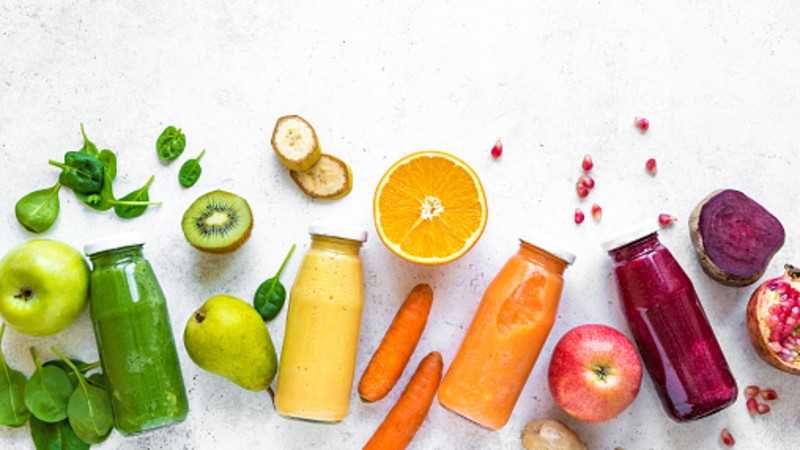1 Seasonality of Demand
Processed food products are in great demand during July-December. This is the peak
period for tourists and hoteliers as well as tour operators to stock the products in large
quantities to cater for the increased number of arrivals. It is also a dry season when the
fruit juices are in great demand by the local consumer.
1.1
1.2.2 Market Characteristics
Customers are sensitive to the quality, price, color and size (weight) of the product. They
would purchase the products frequently, immediately and with minimum effort; to the
marketer of food-processed products, this calls for prompt and regular supply of the
products and effective marketing/advertising.
1.11.2.3 Packaging
Processed food products are packed in tins/cans, Tetra packs and aluminum laminate
pouch packaging in milliliters/liters or kilograms. The quantity of fruit juice products
varies from 200 ml to over 1 ½ liter. Most of the local juice manufacturers penetrating the
Pakistani market using tetra pack cartons, which come in 1 liter, 500ml and 250 ml handy
packs.
Our study has shown that except in few cases, locally processed fruit juice products are
characterized by poor packaging, labeling and absence of vacuum packing unlike the
imported products, which are well packed and marked. Thus, appropriate and attractive
packaging is one of the areas, which a new entrepreneur should strive to effect and
maintain.
Pre-Feasibility Report Fruit Juice Manufacturing
11
December, 2016
1.11.3 Product Distribution
The effectiveness of distribution coverage and practice is of paramount importance in
achieving the desired fruit juice sales. Understanding of the distribution channels is
crucial in order for the manufacturer to plan and implement an effective distribution
strategy. Our study shows that the distribution of fruit products and juices is done through
multiple channels involving producers, importers, wholesalers, retailers and users. While
it is the common practice for the individual customers to buy the products from the retail
outlets; institutional/ organizational buyers such as tourist hotels and agencies would
normally place orders directly with the producers/importers and wholesalers.
A typical distribution setup in fruit juice business involves the following hierarchy
starting from the manufacturer to the consumer:
Fruit Juices are consumed both in rural and urban areas without any exception and brand
loyalty does exist for fruit juices i.e. Frooto in Karachi and Twist and Frost have a strong
penetration in Punjab’s urban and rural markets, whereas, low cost and cheap juices
having token juice element are available in the rural areas.
As in case of other consumer goods, the effectiveness of distribution network for fruit
juices is a function of similar parameters, i.e. distribution margins, frequency of
distribution and product penetration. However, ‘sale first pays after’ type distribution
strategy was also observed during the study in which usually new comers of the industry
offers to the retailers to keep the fruit juice in their shop and pay as the product is sold.
Retailers
1. Departmental Stores 3. Supermarkets 5. Hotels
2. Convenience/Town Shops 4. Bakeries/Staple food stores
Fruit Juice
Manufacturer
Designated
Wholesaler
Manufacturer’s Own Field
Force (Covering mostly the
close markets)
Distribution
Agents
Pre-Feasibility Report Fruit Juice Manufacturing
12
December, 2016
The distribution and retail margin is around 15% to 20% for the fruit juice industry which
is relatively higher than the other consumer goods due to the strong competition.
A domestic producer is generally able to handle distribution within his home city and
surrounding areas. Most manufacturers use their own sales force for distribution in the
close local area. Very few market players in the fruit juice business have their own
national scale distribution networking, e.g. Shezan.
For a fruit juice manufacturer, when he expands the market to another city (or one outside
his local distribution capability) he normally signs up a distribution agent to cover the
entire city market. Distribution agents generally work to target the city market (including
hotels) and cover the full spectrum of retailers; however, a manufacturer can designate
own distribution to the hotels where bulk delivery is expected in large packaging.
The wholesaler’s main job is to sell and promote the manufacturer’s product at one
wholesale market. Manufacturers generally appoint a designated (or primary) wholesaler,
either one per city, if the city is a bigger one and its markets cater to different nonoverlapping localities, or one per wholesale market. Smaller cities move all of their
consumer goods through a single major wholesale market. Sometimes manufacturers rent
or buy a stand in the major wholesale markets of their home city and act as their own
primary wholesaler, although this is rather uncommon.
Secondary wholesalers generally sell to small local retailers (convenience stores),
although sometimes their products go onto tertiary wholesalers in even smaller localities.
The retail price formation formula varies significantly for different products as they move
through the above distribution channels. Generally speaking, lower-value bulk products
are modestly marked up by manufacturers and wholesalers and rely on large volumes to
achieve profitability.
Based on discussion with industry experts, it appears advisable to operate with a mixed
distribution setup. For the purpose of the project under consideration, we propose that
company owned distribution team would cover the home city and the factory surrounding
areas to capture the niche market which will provide business a room for survival
whereas distant distribution operations will be outsourced to the distribution agents
playing around the distribution margins and other promotional schemes. Designated
wholesalers and secondary wholesalers may also play a key role in capturing far off
markets for the product.


